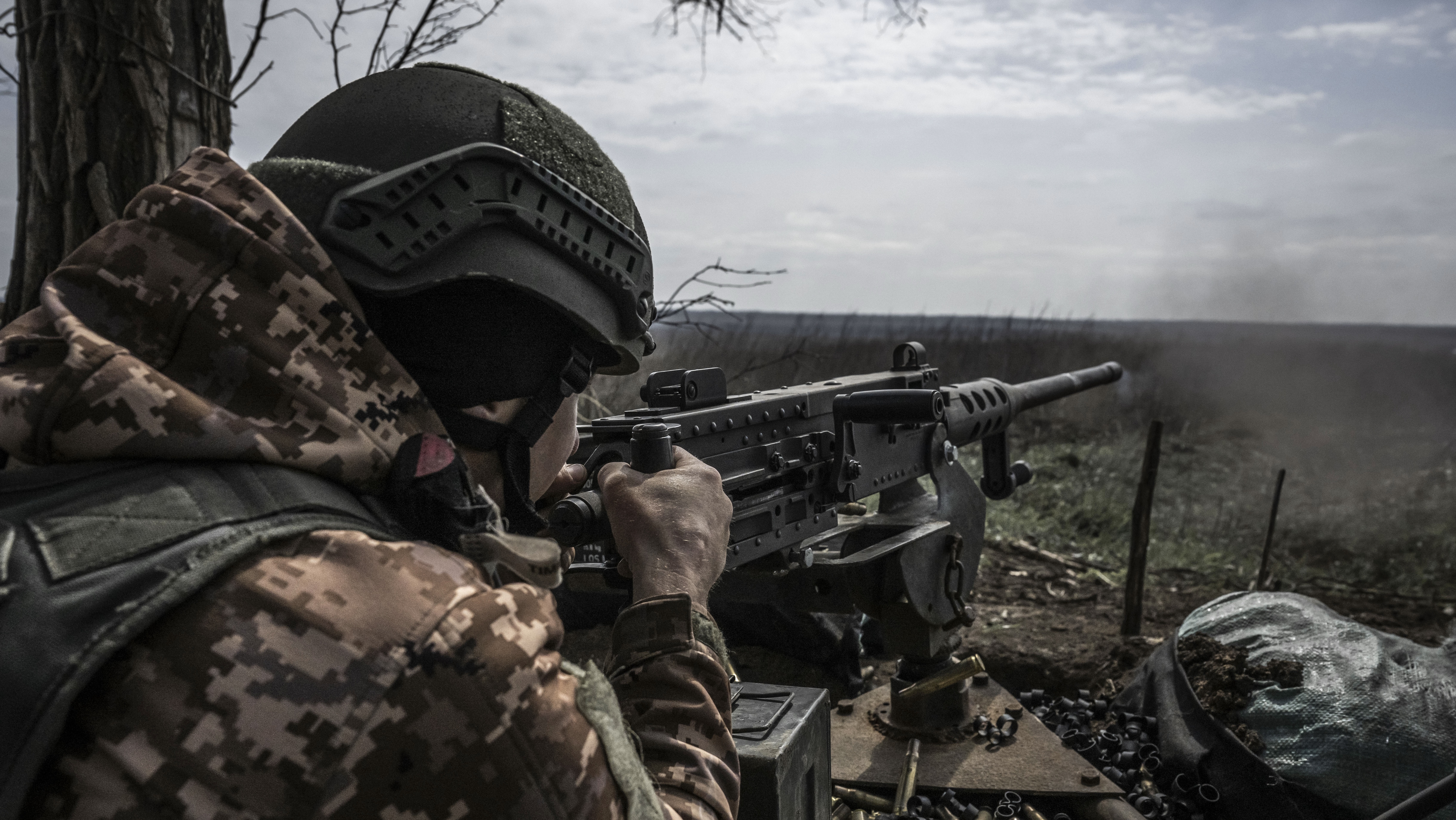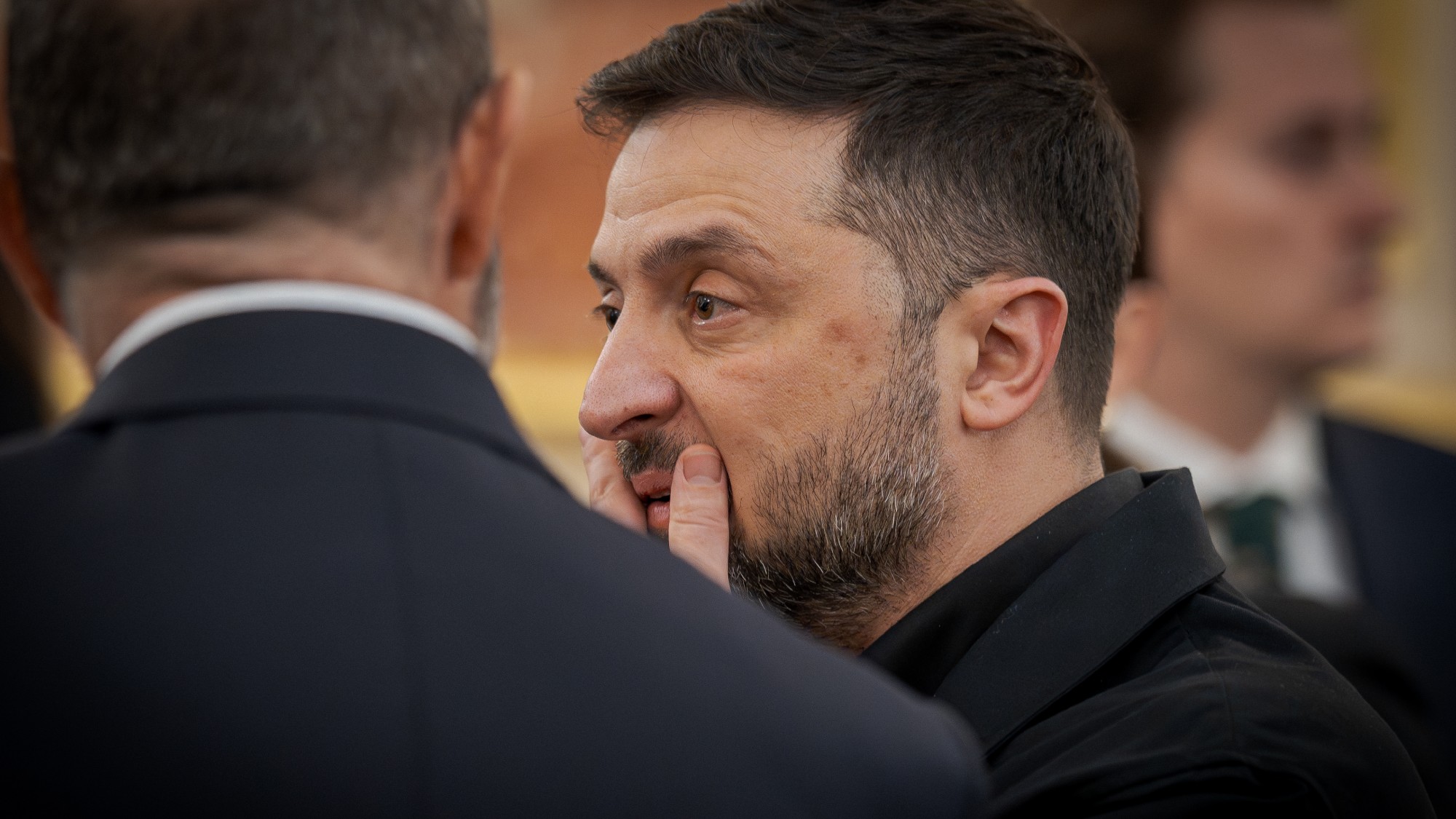Which countries spend the most on their military?
Defence budgets hit record high as many nations react to war in Ukraine and tensions around China and Taiwan

Global military expenditure rose to $2.4trn in 2022, increasing by 3.7% year-on-year to hit a record high.
Europe accounts for the greatest increase in expenditure (13%), according to the Stockholm International Peace Research Institute (Sipri), with this “boom” in military spending a “sign of a nervous world with dictators on the march”, said The Wall Street Journal (WSJ). This can largely be attributed to the “two-headed threat” of China and Russia, the newspaper added.
Most of the rise in Europe was “linked to Russia and Ukraine”, said Al Jazeera, with countries stepping up spending plans “in response to perceived Russian threats”. There are also “tensions in East Asia” over Taiwan, which China considers part of its territory.
The Week
Escape your echo chamber. Get the facts behind the news, plus analysis from multiple perspectives.

Sign up for The Week's Free Newsletters
From our morning news briefing to a weekly Good News Newsletter, get the best of The Week delivered directly to your inbox.
From our morning news briefing to a weekly Good News Newsletter, get the best of The Week delivered directly to your inbox.
What has caused military spending to increase?
Countries across the world are “bolstering military strength in response to a deteriorating security environment”, said Dr Nan Tian, senior researcher with Sipri’s Military Expenditure and Arms Production Programme.
The rise in military spending in central and western Europe to $345bn, which was 30% higher than in 2013, comes following Russia’s declaration of war on Ukraine, the report said. This invasion “had an immediate impact” on spending decisions in Europe.
The moves “spread alarm among other countries that neighbour Russia”, added Al Jazeera. Finland has joined Nato as a result of Russia’s aggression, and Sweden – “which has avoided military alliances for more than 200 years” – is also keen to become part of the bloc.
Also fuelling spending is tension over the “self-ruled island of Taiwan”, which China lays claim to in addition to “almost all of the South China Sea”. This is a “major maritime trading route”, said Al Jazeera, sections of which are also contested by countries including the Philippines, Vietnam and Malaysia.
A free daily email with the biggest news stories of the day – and the best features from TheWeek.com
China and Japan are also “embroiled in a dispute” over the Senkaku or Diaoyu Islands, while Japan is also engaged in a “long-running” disagreement with Russia over the Northern Territories northeast of Hokkaido, which were seized by the Soviet Union after the Second World War.
Who are the biggest military spenders?
The US, China and Russia account for 56% of defence spending in the world. America “remains by far the world’s biggest military spender”, said The Guardian, committing $877bn (39% of the world total) in 2022. Much of this was due to military aid to Ukraine amounting to $19.9bn, Sipri found.
China follows in second, investing roughly $292bn – “4.2% more than in 2021 and 63% more than in 2013”, said The Guardian. Russia grew its military spending by 9.2% to $86.4bn, meanwhile, and India spent $81.4bn, which is 47% more than in 2013 and reflects “continuing border tensions with both China and Pakistan”, the paper said.
Ukraine was the world’s 11th biggest spender, and its 640% rise to $44bn was “the highest single-year increase in a country’s military expenditure ever recorded”, said Al Jazeera. Its military burden – representing 34% of its GDP, up from 3.2% in 2021 – was also “by far the largest of any country”, The Guardian added.
Beyond Ukraine, many countries near Russia also saw sharp spending increases, including Finland (36%), Lithuania (27%), Sweden (12%) and Poland (11%). Expenditure in central and western Europe, meanwhile, was “at levels not seen since 1989”, which was the last year of the Cold War, WSJ said. The paper added that it was a “pity” that “it took a land war on the European continent” to persuade Nato members to spend more on military power.
Will military spending continue to rise?
Although real-term military spending has reached a record high, there is every indication this trend will continue. This is in light of the “deteriorating security environment” which nation states “do not see improving in the near future”, according to Dr Tan. Last year was also “likely to prove to be just the start of mass rearmament”, according to Dr Diego Lopes da Silva, a fellow senior researcher with Sipri.
“Australia and others promise to spend more in the coming years” too, added WSJ, which includes a landmark deal for Sydney to acquire “nuclear-powered submarines”.
The newspaper is also urging the US to spend more for “lots of reasons”, including the notion that China’s $292bn is “the tip of an iceberg”. The nation’s “‘military-civil fusion’ policy obliterates the distinction between public and private spending”, WSJ explained, with China “in any crisis” able to take command of civilian fishing fleets and commercial AI.
Keumars Afifi-Sabet is a freelance writer at The Week Digital, and is the technology editor on Live Science, another Future Publishing brand. He was previously features editor with ITPro, where he commissioned and published in-depth articles around a variety of areas including AI, cloud computing and cybersecurity. As a writer, he specialises in technology and current affairs. In addition to The Week Digital, he contributes to Computeractive and TechRadar, among other publications.
-
 The best homes of the year
The best homes of the yearFeature Featuring a former helicopter engine repair workshop in Washington, D.C. and high-rise living in San Francisco
-
 Critics’ choice: The year’s top 10 movies
Critics’ choice: The year’s top 10 moviesFeature ‘One Battle After Another’ and ‘It Was Just an Accident’ stand out
-
 The small Caribbean island courting crypto billions
The small Caribbean island courting crypto billionsUnder the Radar Crypto mogul Olivier Janssens plans to create a libertarian utopia on Nevis
-
 Taiwan eyes Iron Dome-like defence against China
Taiwan eyes Iron Dome-like defence against ChinaUnder the Radar President announces historic increase in defence spending as Chinese aggression towards autonomous island escalates
-
 Is conscription the answer to Europe’s security woes?
Is conscription the answer to Europe’s security woes?Today's Big Question How best to boost troop numbers to deal with Russian threat is ‘prompting fierce and soul-searching debates’
-
 Trump peace deal: an offer Zelenskyy can’t refuse?
Trump peace deal: an offer Zelenskyy can’t refuse?Today’s Big Question ‘Unpalatable’ US plan may strengthen embattled Ukrainian president at home
-
 The Baltic ‘bog belt’ plan to protect Europe from Russia
The Baltic ‘bog belt’ plan to protect Europe from RussiaUnder the Radar Reviving lost wetland on Nato’s eastern flank would fuse ‘two European priorities that increasingly compete for attention and funding: defence and climate’
-
 How should Nato respond to Putin’s incursions?
How should Nato respond to Putin’s incursions?Today’s big question Russia has breached Nato airspace regularly this month, and nations are primed to respond
-
 What will bring Vladimir Putin to the negotiating table?
What will bring Vladimir Putin to the negotiating table?Today’s Big Question With diplomatic efforts stalling, the US and EU turn again to sanctions as Russian drone strikes on Poland risk dramatically escalating conflict
-
 The mission to demine Ukraine
The mission to demine UkraineThe Explainer An estimated quarter of the nation – an area the size of England – is contaminated with landmines and unexploded shells from the war
-
 Ottawa Treaty: why are Russia's neighbours leaving anti-landmine agreement?
Ottawa Treaty: why are Russia's neighbours leaving anti-landmine agreement?Today's Big Question Ukraine to follow Poland, Finland, Lithuania, Latvia and Estonia as Nato looks to build a new ‘Iron Curtain' of millions of landmines